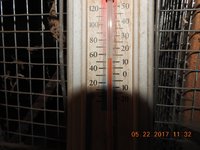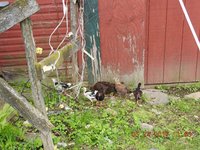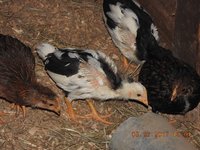Living_Legend
Songster
Hello,
I am new here. I am planning on raising 4 one day old chicks into hens for eggs. I have done a lot of research but I have a few questions I can not find clear answers for. My question is all about timing. I will brooder the chickens in my basement home until I can take them outside and put them in the coop.
When do I start this process in Maryland? Meaning when is it safe to take them outside where they can handle any temperature? I read that Week 5 as long as the temperature does not fall below 60..... Is there a week like 6, 7, or 8 that it no longer matters? I will also be getting a bread that can handle Maryland weather all year when adults.
What I am getting at is if I want to put the chickens outside in the coop on April 1st (avg 40-60 deg) and they need to be 8 weeks old then my start date is February 4th.
Thanks for your help,
Mike
Maryland
April Average 45-70 degrees
May Average 55-80 degrees
I am new here. I am planning on raising 4 one day old chicks into hens for eggs. I have done a lot of research but I have a few questions I can not find clear answers for. My question is all about timing. I will brooder the chickens in my basement home until I can take them outside and put them in the coop.
When do I start this process in Maryland? Meaning when is it safe to take them outside where they can handle any temperature? I read that Week 5 as long as the temperature does not fall below 60..... Is there a week like 6, 7, or 8 that it no longer matters? I will also be getting a bread that can handle Maryland weather all year when adults.
What I am getting at is if I want to put the chickens outside in the coop on April 1st (avg 40-60 deg) and they need to be 8 weeks old then my start date is February 4th.
Thanks for your help,
Mike
Maryland
April Average 45-70 degrees
May Average 55-80 degrees






 I like that I can tell the birds apart and I like the visual variety. It also helps to be able to tell which birds are laying since the eggs will be somewhat different colors and sizes. I do have colored leg bands on them so members of the family can tell them apart. I spend enough time with them that I know all 17 by sight and most of them by "voice".
I like that I can tell the birds apart and I like the visual variety. It also helps to be able to tell which birds are laying since the eggs will be somewhat different colors and sizes. I do have colored leg bands on them so members of the family can tell them apart. I spend enough time with them that I know all 17 by sight and most of them by "voice".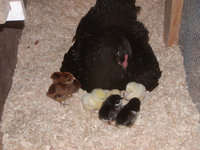
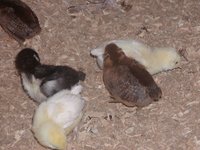
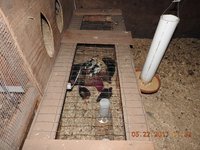
 :
: